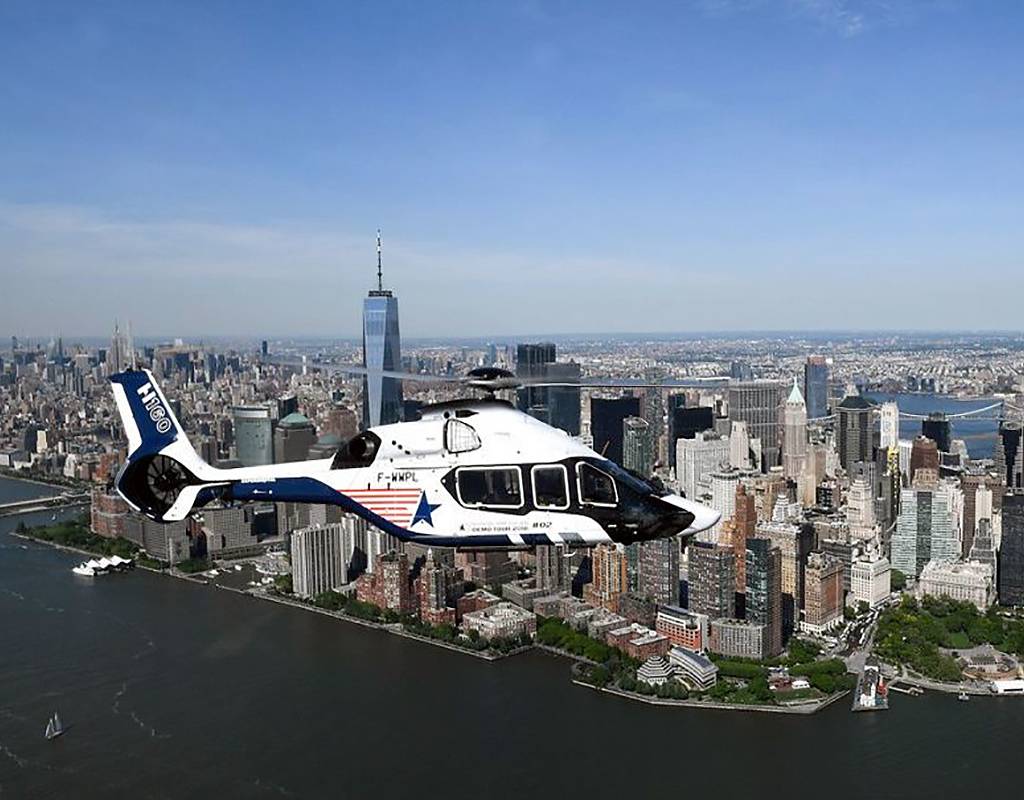
Airbus Helicopters is betting on a variety of launch applications, combined with innovative customer support, to rapidly gain experience and establish an impeccable track record for the H160 medium twin.
The company’s new flagship received its certification from the European Aviation Safety Agency (EASA) early last summer, but is still waiting for the validation of that approval from the U.S. Federal Aviation Administration (FAA). The first delivery is planned to take place in the U.S., which makes the FAA’s seal all the more important to the program.
Travel restrictions due to the Covid-19 pandemic have prevented FAA personnel from visiting Airbus’s headquarters in Marignane, France. Usually, the validation process takes just six months, according to Bernard Fujarski, the H160’s program manager.
Student pilots cannot travel to Marignane, where an H160 flight simulator has been installed. Airbus has therefore devised a training program that relies on flights only. “But FAA pilots have yet to assess it,” Fujarski said.
Seven deliveries are planned for 2021 to customers in Brazil, France, Japan, the U.K. and the U.S. Applications include search-and-rescue, electronic news gathering, VIP transport and route-proving to oil-and-gas offshore platforms.
The H160’s backlog stands at approximately 40 orders, said Fujarski. That means Airbus’s salespeople have yet to meet the airframer’s stated goal of regaining lost market share against the Leonardo AW139. In 2019-20, Leonardo delivered a total 117 examples of its medium twin.
The first order from the French government is expected soon. It is anticipated to comprise 12 helicopters, most of which will be built like civil ones and used by the Gendarmerie (a police force with military status).
Another governmental contract is being prepared for a military version, in the framework of France’s Joint Light Helicopter program. It will use different mission systems and therefore a new avionics suite.
The H160 inaugurates a new production scheme, based on so-called main component assemblies (MCA). An MCA is built and tested before it reaches the final assembly line (FAL) in Marignane. For example, the central fuselage, including the cockpit, comes from Airbus’s factory in Donauwörth, Germany.
The FAL reuses a hangar that previously housed the AS365/EC155 Dauphin’s FAL. The level of automation has been increased, notably with wire-guided carts. Ergonomics and the prevention of hazards such as musculoskeletal disorders were rethought. Higher platforms give workers easier access to the engines and the main gearbox.
Airbus has planned to ramp up production to one H160 per month by the fourth quarter of 2021, and then two per month in 2022.
The H160 has a number of technological features. On the main rotor, five Blue Edge blades provide increased lift and reduced noise. The landing gear’s retraction system is electrically powered, and the human-machine interface was designed for lower pilot workload.

Airbus counts on those attributes to set a new standard in the 12-seat category and for future helicopter designs. It also has high hopes for the H160’s maintainability and maintenance tools.
Customer support was integrated into the design process right from the beginning, program support manager Laurence Di Costanzo Hernandez told Vertical. The idea was to factor in requirements such as easy access to the engines.
A key step in devising the maintenance program was “Operator Zero,” a simulation of an operational scenario to use job cards and tooling. Those Airbus technicians who usually work at customers’ sites played the role of the customer. “Is the task efficient? Isn’t it too complex? Shall we complement the instructions with a video? The Operator Zero exercise makes the difference between validation and maturity,” said Di Costanzo Hernandez.
In the framework of the MSG-3 (maintenance steering group-3) process to define a maintenance plan, approximately 10 customers and potential customers were involved in working groups. In Airbus’s previous development, the H175, customers had been involved after entry into service.
As for maintenance technician training, new tools are emerging. Tablet-based programs demonstrate how the main systems work. They can be used in a classroom or remotely, said Jean-Charles Pages, the H160 training program manager.
Another tool, the virtual maintenance trainer, helps each student learn to follow a job card at their own pace.
Component training rigs offer hands-on experience. Available are an engine, a main gearbox with accompanying mast, a fully equipped fuel tank, a tailboom, and a landing gear. They can be used at an Airbus site or flown to a customer’s base, said Pages.
Finally, a Helionix trainer simulates the avionics suite, including touchscreens.
Once in service, the H160 will benefit from electronic 3D documentation. Each maintenance task is illustrated with 3D views, some of them in motion, said Marie-Line Bergeonneau, 3D innovative projects manager. The technician can select parts to order.



